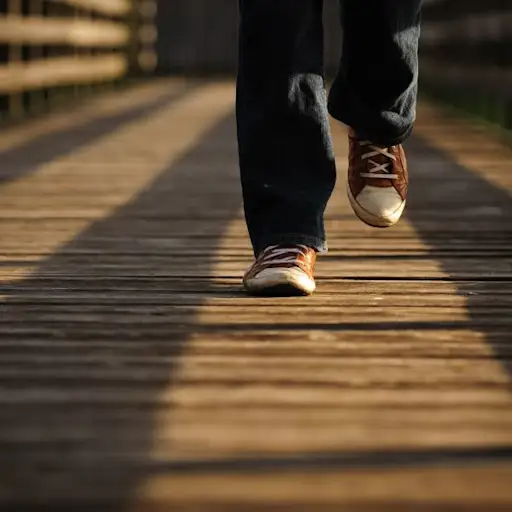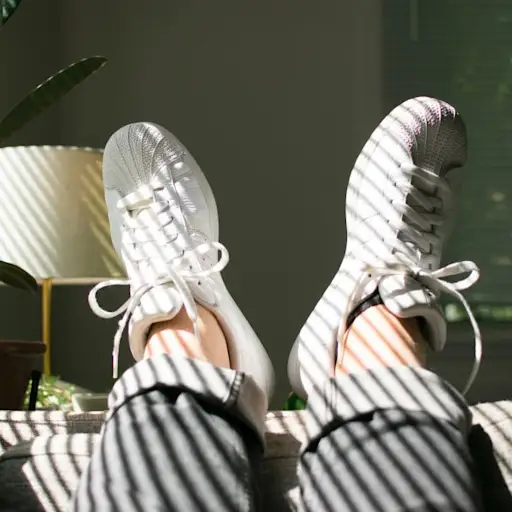7 Signs It's Time for Oxygen Therapy When You Have COPD
Oxygen is essentialto life. That’s not breaking news. Every cell in your body needs it to work properly. But if you have severe chronic obstructive pulmonary disease (COPD), which is an umbrella term used to describe progressive lung diseases including emphysema, chronic bronchitis, and refractory (non-reversible) asthma, the lungs become so deteriorated that it can be hard for people to breath in enough oxygen to support all the bodily functions that need it. If that happens, your doctor may suggest you take supplemental oxygen, called oxygen therapy.

What Is Oxygen Therapy?
Oxygen therapy is a treatment that provides your lungs with additional oxygen. It’s either administered through tubes that rest in the nostrils, a face mask, or a breathing tube. While you can get oxygen therapy at a hospital or doctor’s office, if you need it regularly, you may get a portable oxygen tank or machine to use at home. This supplemental oxygen can help keep your oxygen levels normal, improving your ability to breathe and, more specifically, to walk without feeling shortness of breath.

How Oxygen Therapy Can Help With COPD
When someone with healthy lungs breathes, the lungs absorb oxygen from the air, explains Lori Shah, M.D., pulmonologist and lung transplant expert at NewYork-Presbyterian in New York City. That oxygen is transferred to the blood and distributed throughout the body. With severe COPD, the lungs can’t absorb enough oxygen, causing O2 levels to drop below normal. In this case, oxygen therapy can help keep levels high enough to reduce uncomfortable (and sometimes debilitating) symptoms. How do you know if oxygen therapy might be right for you? Read on for seven signs it’s time to talk to your doctor.
#1: You Feel Short of Breath When Walking
We’re not talking about power walking here. If you feel so short of breath while walking at a normal pace that you have to stop and take a break, that’s a telltale sign your oxygen levels are too low. “If you walk at your own pace and have to stop, that’s not normal,” says Craig P. Hersh, M.D., pulmonary and critical-care physician at Brigham and Women’s Hospital in Boston. You should be able to keep up with people your own age, Dr. Hersh adds. If you can’t keep up with your spouse or friends while walking, it’s time to see your doctor.

#2: Your Heart Races When You Walk
“When your brain senses there’s not enough oxygen, it sends the heart a signal to hurry up and beat faster to circulate more oxygen, so your heart rate goes up,” Dr. Shah says. If you keep walking, you may even start to feel dizzy or experience heart palpitations, she adds. You may even start to sweat, since your body will react like you’re exerting yourself and try to pump blood quicker in its attempt to circulate more oxygen. “Your body is trying to tell you that something is wrong,” says Dr. Shah. Listen to it, and share your experience with your doctor.

#3: Your Walking Oxygen Blood Saturation Is Below 88%
No, you’re not expected to know what this is at any given moment. Your doctor helps here: If you’re short of breath, and if your COPD is more advanced, your M.D. will likely order a six-minute walk test, says Dr. Shah. “It’s nothing fancy—just you walking in the hall with a pulse oximeter on your finger, which measures oxygen saturation in the blood.” When we’re just sitting, we don’t need as much oxygen, but the moment we get up and start walking, our bodies need more, Dr. Shah explains. Levels of 95% to 100% are considered normal. If yours is below 88, you qualify for oxygen therapy.
#4: You Feel Tired During the Day
You might be thinking “whodoesn’t?” And while it’s true everyone feels tired sometimes, people with COPD are more likely to have trouble sleeping. Symptoms like coughing and wheezing can definitely disrupt your sleep, but low oxygen levels overnight can also impact sleep quality and leave you feeling tired during the day. Everyone’s oxygen levels decrease a bit overnight, because breathing slows down. For someone with COPD, they may drop too low. In this case, your doctor may prescribe oxygen therapy for use as you sleep to help you wake up feeling better rested.

#5: Your Fingers Are Blue
Low oxygen levels can sometimes cause the fingers to take on a blue tint, a condition calledcyanosis. Dr. Shah says this is usually more noticeable in more extreme cases, when someone’s oxygen levels are drastically low. It’s not that your hands aren’t getting any blood flow, rather that the blood is not full of oxygen (making it red) like it should be. If you notice your fingers turning blue, let your doctor know. That’s a red flag that your body may need supplemental oxygen.
#6: Your Ankles or Feet Are Swollen
Swollen feet after a long walk in ill-fitting shoes is one thing, but if there’s no obvious cause of your puffy feet or ankles, check in with your doctor. People with COPD may experience swelling in the extremities as a result of having low blood oxygen levels over time. The liver and kidneys need sufficient oxygen to do their job, which includes filtering toxins and fluids from the blood. When they aren’t getting enough oxygen, they can’t function properly, which may result in swelling of the extremities (swelling = too much fluid buildup).

#7: Other Treatments Aren’t Helping
The effects of supplemental oxygen are immediate and have a positive impact on the heart, lungs, and brain, says Dr. Shah. An inhaler, on the other hand, can help reduce spasms in the airways and allow you to breathe more deeply, but it won’t improve oxygen levels the way oxygen therapy can. You’ll likely need a multi-pronged approach to treat your COPD and its symptoms, so if you’re already using an inhaler and still feel short of breath or have trouble walking, adding oxygen therapy may be the next step.
What Is Oxygen Therapy:American Lung Association. (2018) “Lung Procedures and Tests: Oxygen Therapy.”lung.org/lung-health-and-diseases/lung-procedures-and-tests/oxygen-therapy/
Oxygen Therapy Basics, Research, and Resources:U.S. National Library of Medicine. (2019). “Oxygen Therapy.”medlineplus.gov/oxygentherapy.html
Low Oxygen Blood Saturation:Mayo Clinic. (2018). “Symptoms: Hypoxemia.”mayoclinic.org/symptoms/hypoxemia/basics/definition/sym-20050930
Feeling Tired with COPD:The National Sleep Foundation. “COPD and Difficulty Breathing.”sleepfoundation.org/articles/copd-and-difficulty-breathing
Common Questions About Supplemental Oxygen:University of California San Francisco Health. “The Need for Supplemental Oxygen.”ucsfhealth.org/education/the-need-for-supplemental-oxygen
Basic Guide to COPD and Treatment:Merck Manual.(2018). “Chronic Obstructive Pulmonary Disease (COPD).”merckmanuals.com/professional/pulmonary-disorders/chronic-obstructive-pulmonary-disease-and-related-disorders/chronic-obstructive-pulmonary-disease-copd
Cyanosis Causes and Care:U.S. National Library of Medicine. (2019). “Blue Discoloration of the Skin.”medlineplus.gov/ency/article/003215.htm
Swollen Feet or Ankles in COPD:Lung Institute. (2016). “How Oxygen Affects Extremities.”lunginstitute.com/blog/oxygen-affects-extremities/
艾米是一个自由撰稿人nd certified personal trainer. She covers a wide range of health topics, including fitness, health conditions, mental health, sexual and reproductive health, nutrition, and more. Her work has appeared on SELF, Bicycling, Health, and other publications. When she's not busy writing or editing, you can find her hiking, cooking, running, or lounging on the couch watching the latest true crime show on Netflix.





